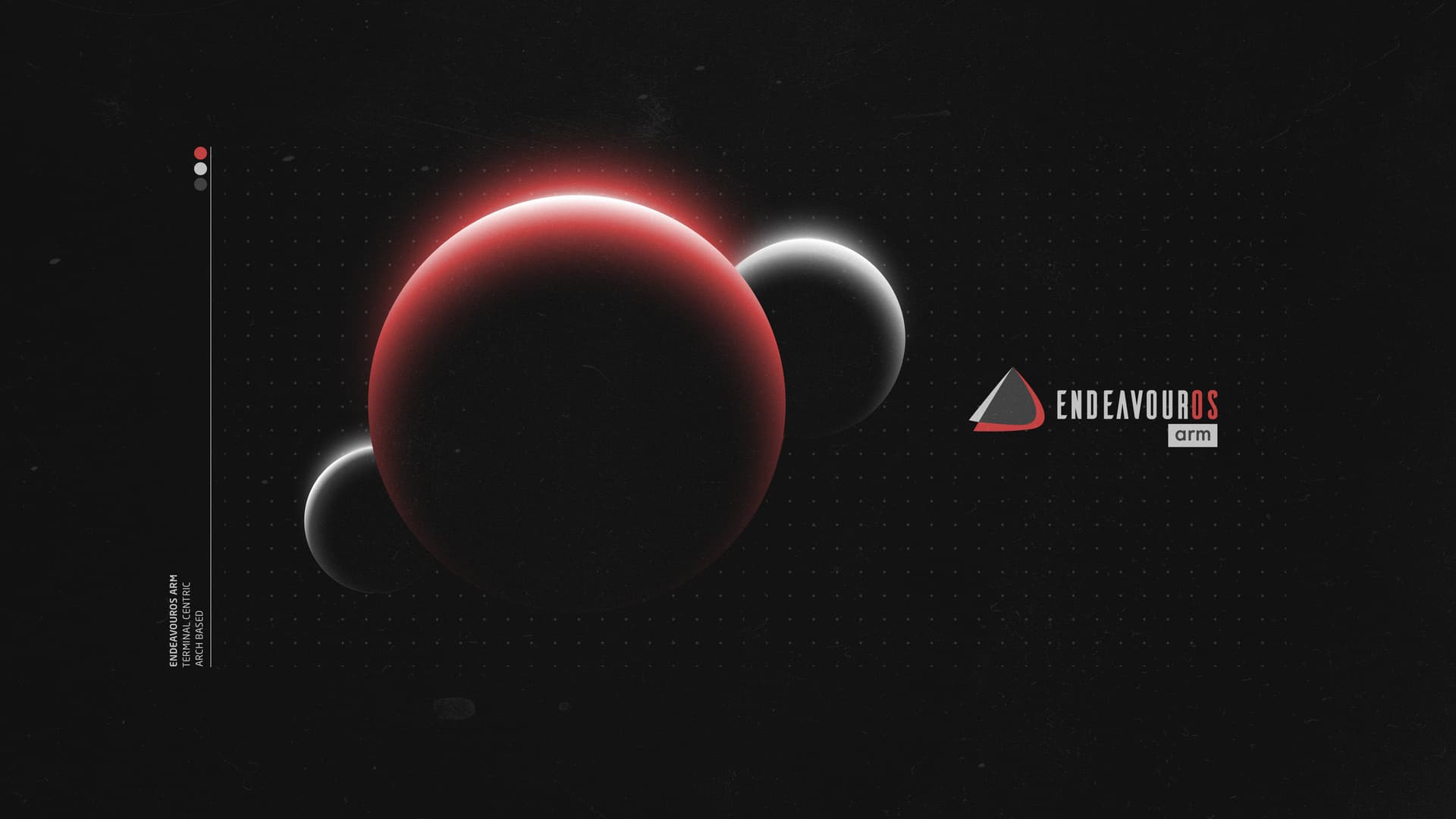
Just like NASA’s Artemis mission will be to go back to the moon and also lay the foundation for the future (Mars) missions, EndeavourOS’ Artemis release is laying the foundation for the future of EndeavourOS ARM.
Artemis is the first release that ships with an integrated feature to install the first stage of a two-step installation of EndeavourOS ARM on an SD or SSD for your ARM device.
Odroid N2/N2+ and Raspberry PI

Around the Apollo release, community member Sravan started pioneering the options for the ARM installer to make it more user-friendly and to get x86_64 EndeavourOS users more curious to discover ARM. His ideas and also help in improving the existing ARM installation method, triggered Pudge, our main ARM developer to add him to the team.
This resulted in introducing Calamares to the ARM installation process and an integrated install option on the Welcome app of the main ISO.
The method requires two easy steps, the first one is the base install that uses an easy-to-use automated script in the terminal and the second step uses the Calamares installer to install the location, keyboard, DE/WM and user/computer name and password.
The new installer is still in beta, but we have had successful reports of entirely working installations amongst our ARM community.
Since it is still in beta, the installer only supports Odroid N2/N2+ and the Raspberry PI at this moment. Support for other devices like the Pinebook family and more is in the pipeline.
Calamares isn’t the only step that has been made, both the main dev team and the ARM team have improved the way the main Endeavour packages (eos apps, DE and community editions) are updated for both projects. So both repos are more in sync from now on.
As I said earlier, this is the first step in bringing ARM and the main project closer, our next step is to let Calamares also handle the base install for an entirely GUI user install experience.
The install

The new method consists of two steps, the first step is handled by an install option on the Welcome app of the Artemis ISO.
Just fire up the ISO on an x86_64 machine, stick in an SD card or connect an SSD designated for your ARM device to the machine, then with a click on the ARM install button, the terminal will open and it will prepare the base install in a couple of easy to follow steps by selecting the right device and partitioning the card/SSD. After those steps, it will start downloading a 1.5 GB image and completes the base install on the storage device.
Calamares

After the first step is completed, the designated ARM storage can be added to the ARM device to perform the second and final step.
An Openbox Live environment with a modified Welcome app that gives the options to edit the mirrors, install the official DEs and install the community editions, just like the regular ISO provides for x86_64 systems.
The main difference is that the ARM Calamares options only concentrate on location and keyboard selection, the DE/WM options and configuring user /computer name and password, the base install has already been done by the first step.
After installing the chosen DE/WM, Calamares will be wiped off the storage device during that process.
Other devices and future releases

As I explained earlier, the new installer is a beta release and has limited device support for now, but we are going to add more devices in the future. The team currently is brainstorming to add the first step, the base install, in the Calamares installer also, so it will only take one step to install ARM
The existing semi-automated script is still available for other non-supported devices. We did simplify that process too by making it a two-step install as well, the base install for the specific device and the EndeavourOS install. The Mac M1 EndeavourOS install on Parallels instruction, still works also with the EndeavourOS install method.
Features and Improvements on the ARM install
- Calamares 3.2.60
- Firefox 101.0.1
- Linux kernel 5.18.5
- Mesa 22.1.2
- Xorg-Server 21.1.3
- nvidia-dkms 515.48.07
Odroid N2/N2+
- Added
btrfsfile system support in addition toext4 - Uses Linux 5.18 kernel from Archdroid. Thanks to Archdroid team!!
- Improved performance for Odroid N2+ by enabling overclocking out of the box using Archdroid’s
uboot - Enabled sound support and btrfs support by using a post-install package inspired by the Manjaro ARM team
Raspberry Pi
- Updated
config.txt - There was btrfs issue caused by including subvolid in fstab before. It caused difficulties in restoring snapshots. Now fstab has no btrfs subvolid. Thanks to Dalto for his help.
General
- Lightdm now news gtk-greeter instead of slick-greeter for Window Manager to give a more stable experience. It has a new custom theme.
- ARM images are now compressed using zstd method to allow a fast decompression experience for the user
- EOS Quickstart working again on ARM. Offers an easy selection of common and popular apps to get you started.
- Sway login manager changed from ly to SDDM
You can download the ISO over here.

